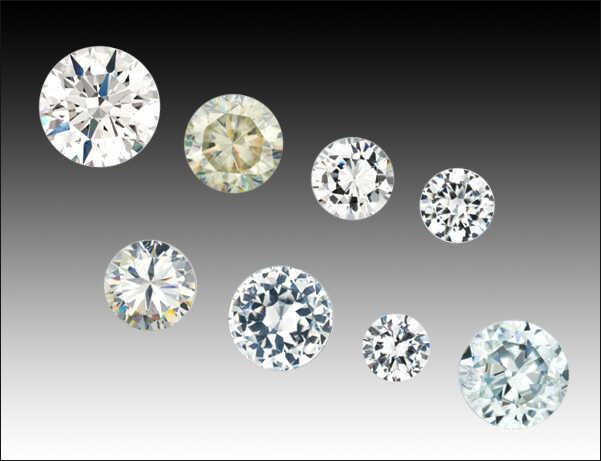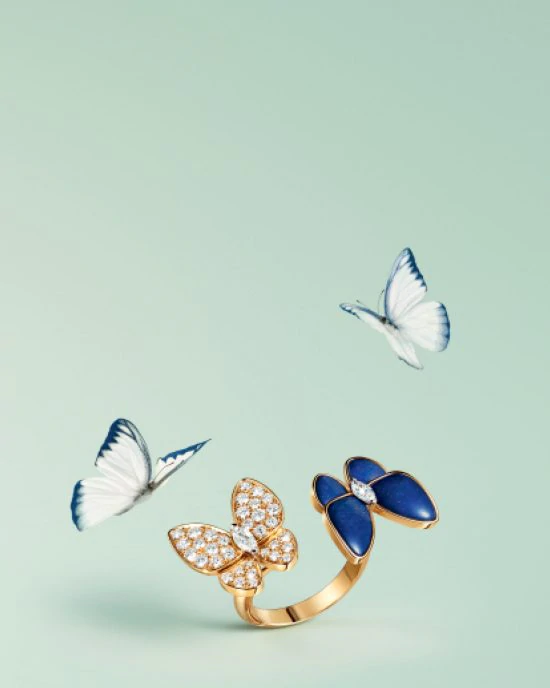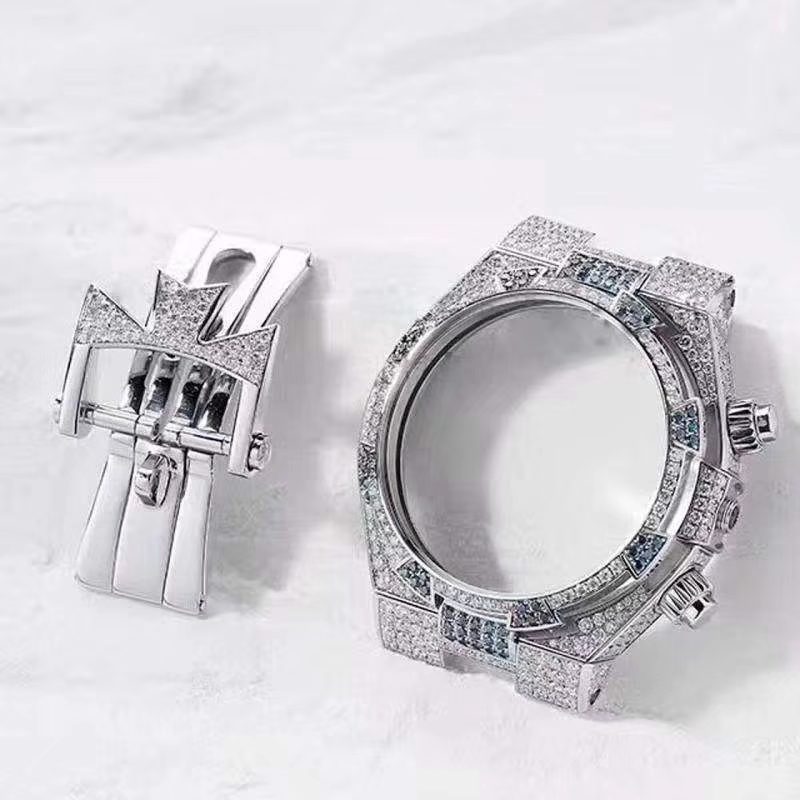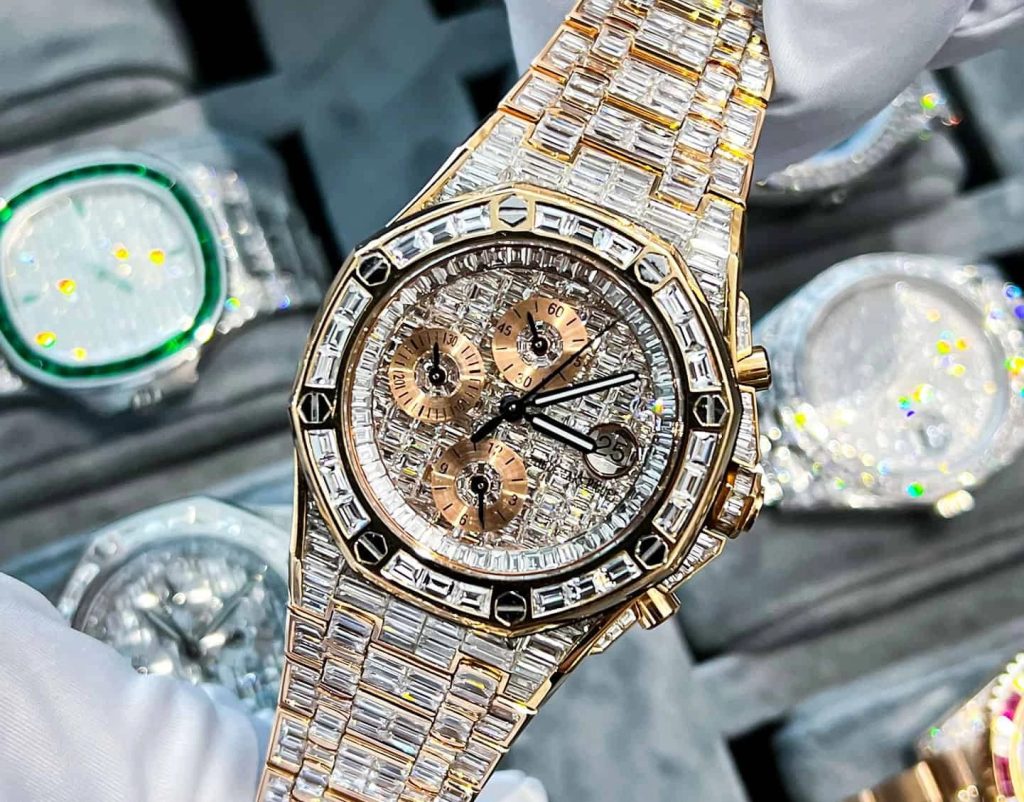9 Top Ways To Spot Fake Diamonds

There can appear several situations when you need to check the validity of a diamond. For example, some people want to get this precious stone at any cost and readily buy anything that looks like a diamond. Others are so inexperienced and naive that they buy diamond jewelry nearby from “trusted” jewelers without thinking much or asking for jewelry documents. Finally, if your grandparents were fore thoughtful and well-off, you can become a lucky owner of a likely-a-diamond family heirloom. The gemstone’s origin can be already lost, though — and who knows if a diamond is real or it’s a fake stone?
Luckily, you can determine the quality and nature of a real diamond. Among other advantages of higher awareness before the diamond purchase, you can easily spot a fake diamond with this knowledge. To make it happen, let our diamond experts share the top ways to check if your diamond is real.

What Stones May be Instead of Diamonds
In the world of precious stones, there are several alternatives to a real diamond. All of them are neither good nor bad — the problems start when you get the stone that is not what it’s claimed to be. In particular, a fake diamond can actually be:white zircon,cubic zirconia,moissanite,white topaz,white spinel,quartz,glass,lab-grown diamond,white sapphire.
All these gems have different chemical compositions. Thus, spotting their exact appearance requires different methods and techniques. Nevertheless, our task is not to teach you how to differentiate moissanite from a lab-grown diamond, for example. We’ll just rely on a real diamond’s characteristics and the working methods to check a fake stone.
Here are the Ways to Find Out If You Have A Real Diamond or A Fake One
2 Basic (and Most Reliable) Tests You Can Do at Home
Water Test
How to do this test and check if a diamond is real: This is one of the easiest tests ever. Take a normal glass and fill three-quarters of it with water. The type of water used doesn’t matter here. Put a loose diamond inside the glass.
How a real diamond reacts: If your diamond is real, it will sink in a glass.
How a fake diamond reacts: If you’re the owner of a piece of glass or quartz, you’ll witness how the stone floats underneath or stays at the water surface.
How valid is this test: This experiment can spot a fake diamond well because it applies a fundamental physical law: measuring the density level of your stone in question.
Fog Test
In our opinion, the fog test is the best experiment you can do with a jewel. It’s easy, safe, and applicable to both the diamond jewelry and a loose diamond.
How to do the test and check if a diamond is real: Take a diamond or a diamond ring between two fingers. Blow some air on it — just like you did in childhood with a bus window to draw something.
How a real diamond reacts: On the surface of a real diamond, the fog disappears immediately.
How a fake diamond reacts: A fake stone keeps vapor for several seconds. For example, moissanite keeps air on its surface for the same time as your sunglasses or bathroom mirror.
How valid is this test: Among all the possible experiments that check whether a diamond is real, the fog test is indeed reliable. It has a scientific background: due to the high conductivity ability, a real diamond can quickly disperse heat.

Why don’t we refer to the scratch test here?
Because it’s inaccurate.
In practice, this test rarely tells the truth. The mineral mostly used for this experiment is a glass in the mirror or a piece of sandpaper. But if you try to find out if a diamond is real with it, you’ll likely to overlook a fake diamond: glass has 5 Mohs and sand 7 Mohs only, while most of the fake diamond options range from 7 (quartz) to 9.25 (moissanite). In other words, the mirror won’t scratch any real diamond alternatives. The only way to make this test reliable is to scratch your stone with a real diamond — but it sounds absurd if your task is actually to check whether your diamond is real!
Simply put, all the fake diamond alternatives will seem authentic in the scratch test. That’s why we don’t recommend it for checking whether your diamond is real. Even if the test passes successfully, you’ll receive a non-attractive stone in its result.
That’s why we recommend a couple of more effective methods to check if a diamond is real with a real diamond to compare with.
2 Ways to Use a Real Diamond and Check If a Diamond Is Real
Weighing a Fake Diamond on Scales
The remarkable thing about a real diamond is its weight. It can show itself being heavier or lighter compared to other precious stones. Precisely, cubic zirconia weighs almost half more than a diamond, while moissanite proves to be a fake diamond, being 15% lighter. You can use this knowledge as a method to check if another diamond is real.
Shortcomings of this method: Weighing is an accurate test to indicate a diamond is real if only you have two identical same-shaped gems. Otherwise, you’ll be incapable of evaluating these stones adequately. If this condition is unrealistic for you, bring your likely-to-be-fake diamond to the local jeweler who can find a real diamond of needed parameters.
How to Tell if a Diamond is Real with a Loupe
A loupe is a small magnification device that will help you spot the tiniest details on a stone. In the magnification test, it can check your diamond is real through not weight but another critical parameter in 4Cs: clarity. It relies on the presence of inclusions in a gemstone.
To complete the test, find a 10x magnification glass first. You can order it on Amazon or find it in a jewelry store nearby.
The difference between an authentic diamond and a fake stone lies in the area of natural imperfections. If the diamond is real, you will witness some blemishes, color dots, and even traces of minerals on it. In its turn, a fake diamond is lab-created — and so, it has no flaws and will appear extremely pure and unbelievably untouched. Moreover, you can pay attention to the edges of stone — a diamond has sharp facets, while lab-grown simulants have rounded ones.
The more accurate magnification glass you have, the easier to spot the difference. To ensure you have the relevant measurement tool, refer to a professional jeweler. An expert eye can see the diversity of formation and differentiate a fake diamond from a flawless real one.
Note there exists a special class of totally pure diamonds that have no inclusions. They have a label of Internally Flawless clarity. In this case, the help of an expert can become priceless: it will protect you from disregarding a truly valuable diamond by mistake.
When you test the stones by clarity, making a mistake is relatively unlikely, though. But once you have a stone in question along with a GIA certificate that shows IF clarity, there’s no doubt: such a diamond is real!
4 other tests you can try to validate the diamond is real
Buy “The Diamond Tester”
Many jewelry observers recommend buying a special tool to measure the thermal conductivity of a stone and prove your diamond is real. They are even available on Amazon and come in different price categories.
In essence, this tester is a slightly improved version of a classic fog test. It also relies on the ability of a real diamond to disperse heat rapidly. At the same time, “The Diamond Tester” has the same problem as the fog test — it cannot detect the difference between a diamond and moissanite.
Sparkle Test
You also can observe the sparkling ability of your stone with a practical aim — to double-check this diamond is real.
Pay close attention to the way your gem reflects the light. It’s common for a diamond to demonstrate grayish and white sparkling from inside and scatter it in rainbow colors around. In its turn, fake stones tend to intensify rainbow-colored reflection, with no gray and white presence in its spectrum.
Also, you can rely on the refractive index in the sparkling. To validate your conclusions, place your jewel over a newspaper and observe its reaction. A real diamond will disperse the light inside and won’t allow black reflection to appear. On the contrary, diamond alternatives will pass this blackness through — and sometimes, you’ll be even able to read the words through the stone!
This situation is simply impossible for a real diamond.
The Dot Test
If you don’t have a newspaper, you can still check your stone with a piece of paper. For that, draw a dot there. Then, place the jewel from the flat side down on this dot.
If you look through the pointed side of a real diamond, you shouldn’t see anything! But if you witness reflection or even see the dot crystal clear, there’s no doubt — your stone is fake.
Black Light Test
If you have an opportunity to use a black light to check if a diamond is real, don’t miss it!
To conduct the test, turn off all the lights and put your stone under the source of black light. If you’re holding a genuine diamond, you’ll witness an intense blue color on the diamond surface. A fake gemstone will reveal itself through other colors — including green, yellow, or gray tints.
The validity of this test is limited, though. Among all, because not all the real diamonds will react to the black light with blue fluorescence.
How to check your diamond is real if it’s inserted in the setting
Even though most tests require your stone to be loose, the mounting can still tell if your diamond is real. The general rule is that a real diamond is always put in a more expensive setting than a fake one.
In the given circumstances, your task is to check the marking of the metal. Look for 10K (or 417), 14K (or 585), or 18K (or 750) if it’s gold or PT (or Plat) if it’s platinum.
Sometimes, checking the marking is the best test you can apply to validate if a diamond is real. For example, if you see C.Z. stamp there, it basically means you’re dealing with cubic zirconia.
Also, you can see the mount through a fake stone only. So, consider it as one more indicator to rely on testing.
Who can help me spot a fake diamond?
If you need professional assistance or experience any problems with understanding tests, please refer to Coral Jewelry! Our experts have vast experience in the diamond industry and ensure the quality and origin of all precious stones sold. We guarantee all our diamonds are GIA-certified and sold at wholesale prices.
If you want to get a stone and not worry whether it’s a real diamond, buy the precious stones from us!















